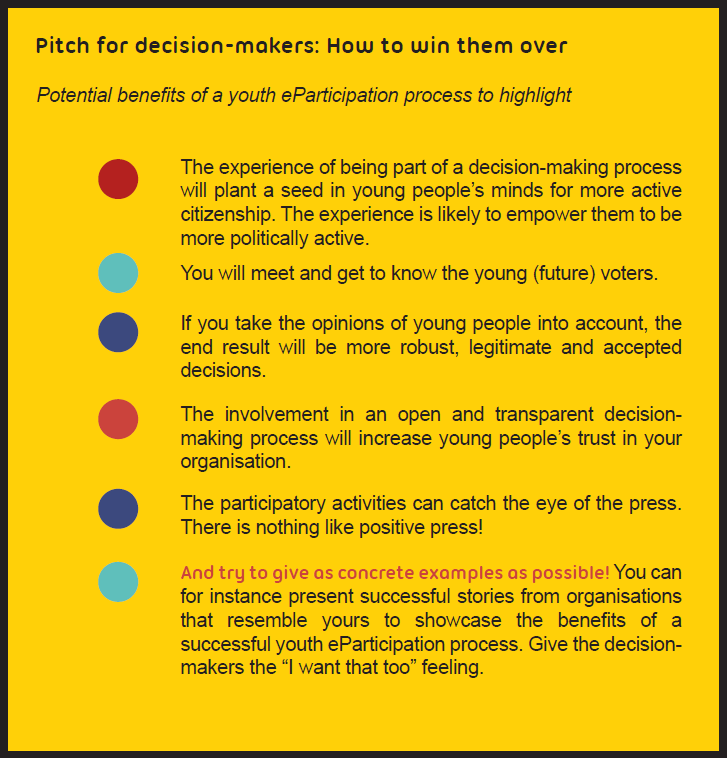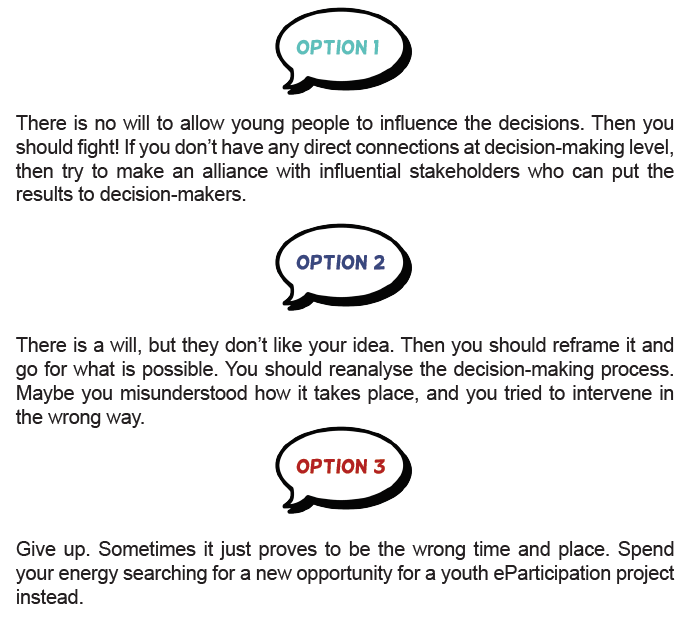Map potential endorsers
Contents
Map your (potential) endorsers with decision-making power
The next question you have to ask yourself is: Whose support do you need in order to make your project count and reach its goals?
The list of possible sources for a project idea is of course endless. However, one question that divides project ideas into two groups is whether or not you have endorsers with decision-making power on your side. If you work in a public administration, let’s say a municipality, the project might have been initiated by the city council, and you have been asked to realise it. The question is then easily answered. Nevertheless, even when the decision-making power has endorsed your project from the onset, it is still highly relevant to map who your true endorsers are. Most likely not everyone in the city council voted in favour of realising the project. To put it another way, you have to map your friends and enemies. Then you know whose support you can count on, and whom you should try to win over.
For project ideas which do not yet have endorsers with decision-making power, here are some tips for changing this situation. When you have made an overview of whose support you need, you have to meet with them, present your idea and convince them to advocate for your project. If it is difficult to get access to the potential endorsers use your network. Maybe you know someone who knows someone who works in the mayor’s office. Then ask this person to help you set up a meeting with the mayor. Another way to catch the decision-makers’ attention is to write a small piece in the local newspaper or participate in a public political event where you can introduce yourself and briefly pitch your idea.
 If it is completely impossible to convince people with decision-making power to support your project, analyse why this is the case. Three main outcomes of this analysis are often the following:
If it is completely impossible to convince people with decision-making power to support your project, analyse why this is the case. Three main outcomes of this analysis are often the following:

When you have the decision-makers’ support, make a contract with them. A contract can be a paragraph to include in the public version of the project description. This paragraph should capture in as much detail as possible how exactly the decision-makers will use the results of the project. The contract is a way to ensure that the decision-makers will not backpedal on their promise to allow young people to influence the decision-making process.